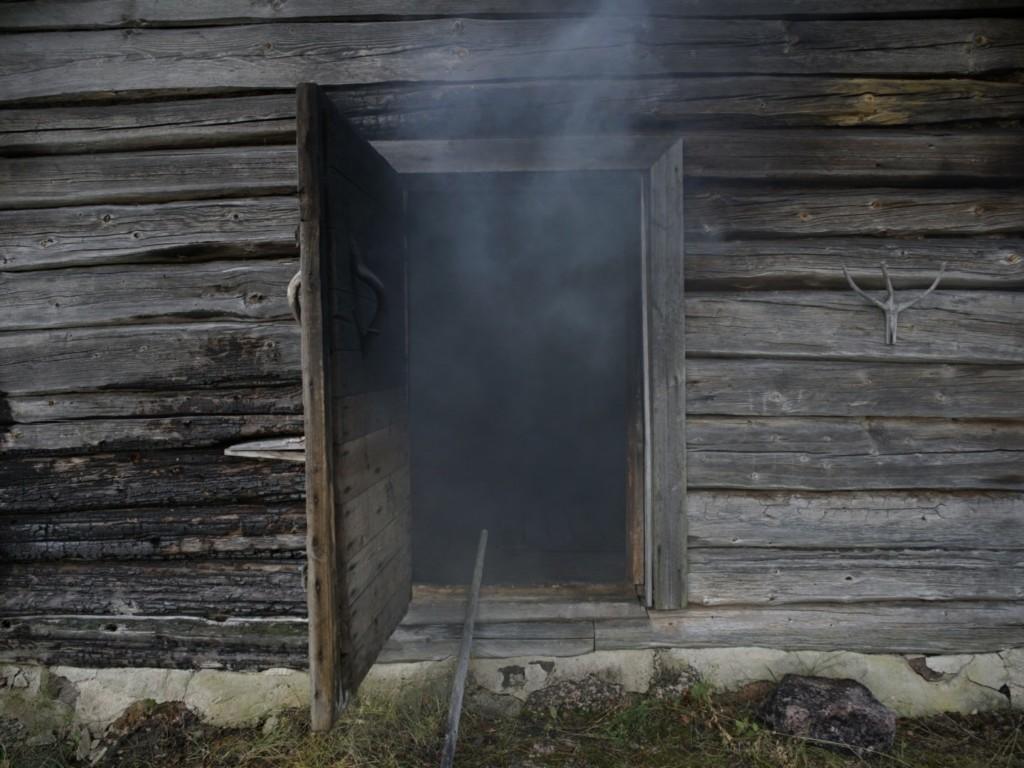
A good smoke sauna
The International Chimneyless Sauna Club has evaluated and scored around 200 chimneyless saunas. This has given the Club a reasonable understanding of what makes a good chimneyless sauna. However, they can take various forms, and everyone’s own sauna is the best one for them. With this in mind, the Club looks for creativity, which it has found in abundance in Finland. One example is a gargantuan chimneyless sauna carved inside a rock, providing an unbelievable bathing experience.
Below is a list of elements that the Club’s evaluation group focuses on:
- the appearance of the building
- fragrance
- ecological aspects, cleanliness
- access to fresh air
- fire safety
- decoration, functionality
- heater
- bathing quality
- resulting wish to bathe
- location.
A chimneyless sauna is an ecological one. When it finally disappears, some 700 years after having been built, all that will remain is a pile of rocks, as everything else is made from renewable materials.
Another important factor is fire safety. The Club claims that a chimneyless sauna can be built in a way that prevents it from burning down. Plenty of attention is paid to this point during an evaluation.
The heater is the heart of löyly
How to heat a chimneyless sauna?
- The smoke must exit calmly without any pressure or a draught.
- The smoke layer level must be as high as possible.
The evaluation begins with the heating. An integral part is a hatch or a roof funnel, which must let the smoke out slowly without any pressure. This means that the opening needs to be large enough. If the wind direction allows, they should all be kept open when heating the sauna in the summer. Inside the sauna, the smoke layer level should be as high as possible, at the height of the bench or higher, so that the footrest remains clean. The level can be adjusted with the hatch and by keeping the door open.
Heating
- Use dry mixed wood.
- The wood should be cut as small as possible (2–5 cm).
- The smallest cuts should be used for the last load (alder or aspen).
- Allow at least one hour for the embers to go out and the smoke to escape.
- Maintain a low temperature (60–80 °C).
The recommendation is to use mixed wood for the heating, and depending on personal preferences it can include aspen, alder or conifers, to name a few. Varying the mixture of firewood creates a whole new experience every time – like sampling wines. As alder does not contain pitch, adding pine or spruce into the mixture will add a hint of that pleasantly bitter fragrance.
When it comes to fine particles, it is important that the wood is bone dry. Also, the smaller the wood is cut the better. For example, the thin strips of wood used in between layers of planks when drying them are suitable for the purpose, and at least the final load should use small pieces. If the combustion chamber needs to be cleaned, use alder or aspen in the final load of wood.
Never forget the importance of letting the embers go out and the smoke to escape before bathing.
You should aim for a low, constant temperature. Try not to make a chimneyless sauna too hot, as this will ruin it.
Fire gases and burning
During heating:
- Adding firewood creates carbon monoxide.
- The carbon monoxide level will initially be very high when the heater is first lit.
- The amounts will slowly reduce, but a new peak will occur every time more firewood is added.
- The smallest cuts generate one sixth of the amount of carbon monoxide.
- The hatch is closed to smother the embers, causing the carbon monoxide level to rise and remain very high.
- When throwing water on the hot stones to expel the carbon monoxide, the level will remain high if the embers have not been removed.
- While the embers are still going out, the carbon monoxide level will keep rising.
Once the embers are out:
- When throwing water on the hot stones to expel the carbon monoxide, the embers are activated and increase the level of carbon monoxide, unless the embers have been removed.
- Once the embers have been removed, little carbon monoxide will be created when water is thrown on the stones.
- Therefore, the remaining charcoal and ashes should be removed.
A talk titled A good chimneyless sauna given in April 2009 at SaunaExpo by Pentti Tuohimaa, head of the International Chimneyless Sauna Club. Edited by Raili Vihavainen.